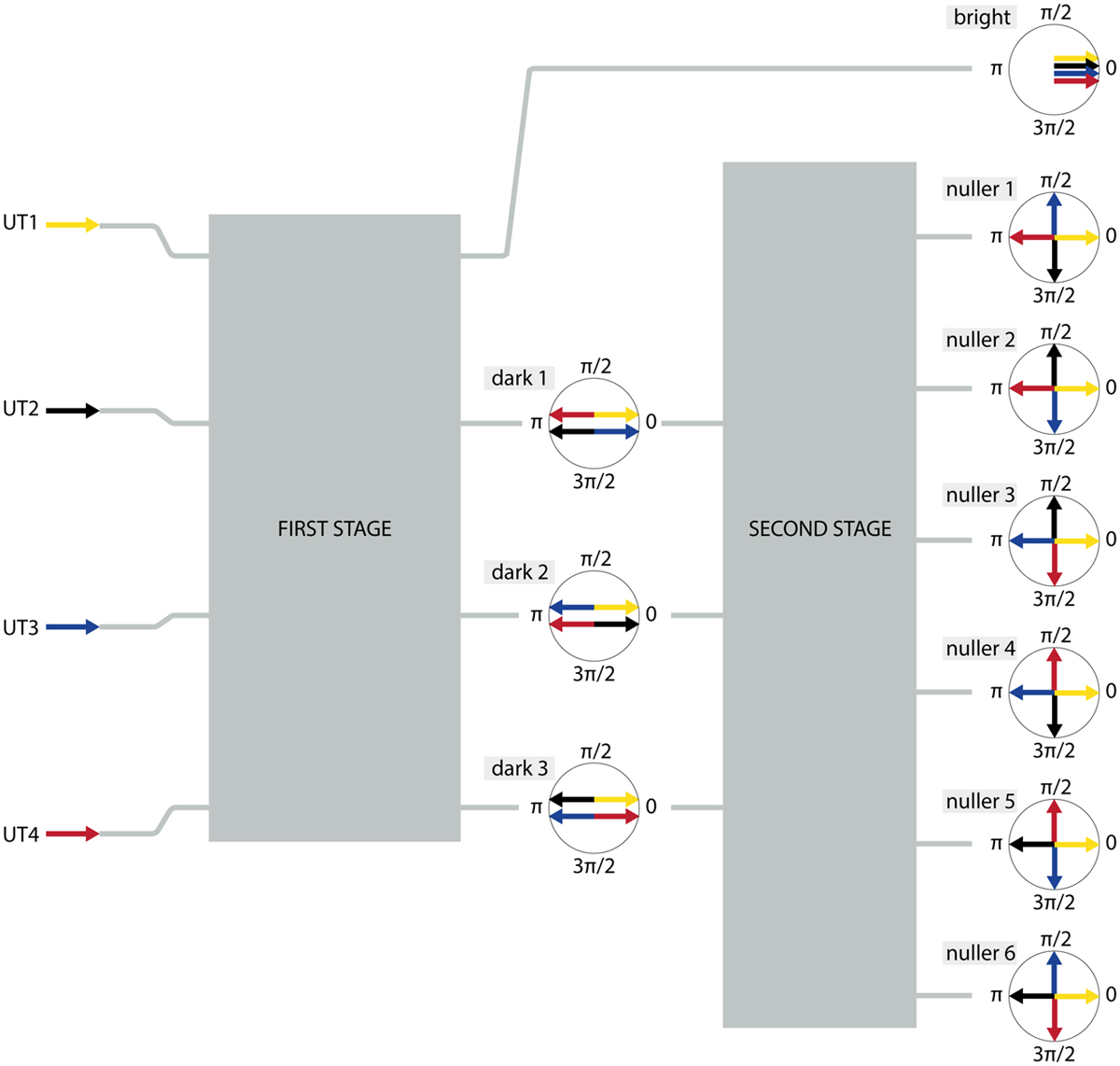Fig. 3

Download original image
Schematic representation of the two-stage kernel-nuller architecture. Light from the four VLTI UTs is coupled into the first 4 × 4 stage, which produces four outputs. Four in-phase (ϕ = 0) signals interfere constructively to produce a bright output (where most of the on-axis starlight is directed). For the three dark outputs, a phase shift (ϕ = π) is applied to the signal from two out of the four inputs. This means that when the light is combined, one input is out of phase from the other and so destructive interference occurs, leaving no starlight. At each stage of the four-beam combination, the different input (represented by coloured arrow) phase shifts applied to obtain the respective outputs are shown with complex matrix plots (Laugier et al. 2020). The second 3×6 stage performs six possible pairwise combinations of the dark outputs, with a phase shift (![]() ) introduced on one of the outputs. From the complex matrix plots of these six nuller outputs, we can see that pairs (nuller 1–2, 3–4, and 5–6) of outputs are mirror images of each other, an attribute that allows them to form a kernel-null.
) introduced on one of the outputs. From the complex matrix plots of these six nuller outputs, we can see that pairs (nuller 1–2, 3–4, and 5–6) of outputs are mirror images of each other, an attribute that allows them to form a kernel-null.
Current usage metrics show cumulative count of Article Views (full-text article views including HTML views, PDF and ePub downloads, according to the available data) and Abstracts Views on Vision4Press platform.
Data correspond to usage on the plateform after 2015. The current usage metrics is available 48-96 hours after online publication and is updated daily on week days.
Initial download of the metrics may take a while.


